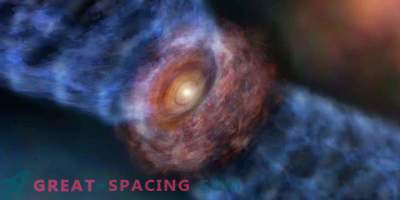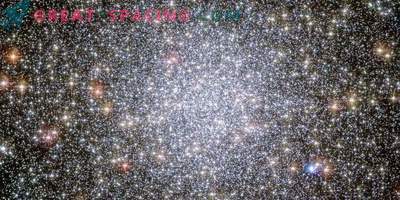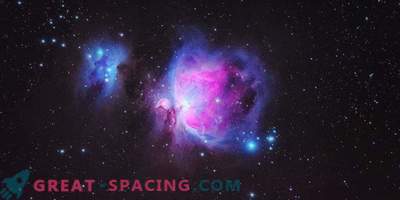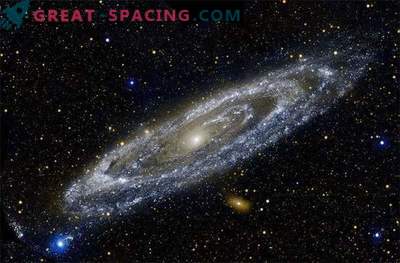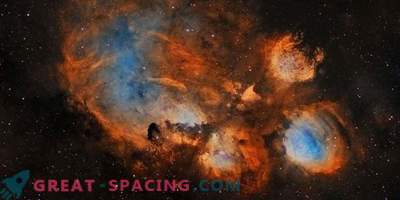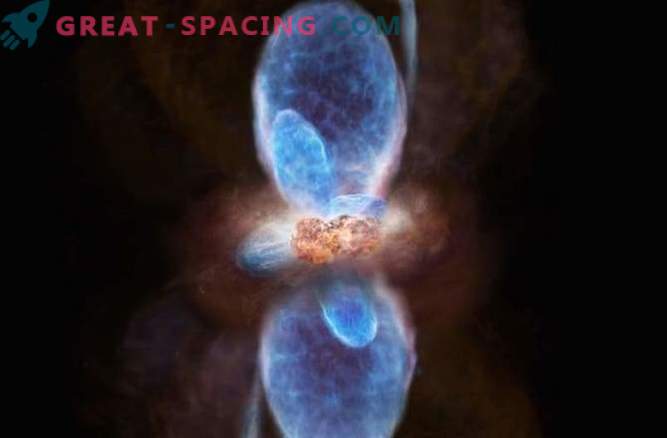
While probing the center of a large cluster of stars, scientists were in for a big surprise: they discovered several streams of interstellar gas, the intersection of which formed a structure resembling an hourglass with its unusual shape. In the depths of these streams were hidden two giant newly formed stars.
Similar structures, with their shape similar to an hourglass, are observed in areas of low-mass star formation. For the first time, a stream of interstellar gas containing methanol was found in the field of high mass star formation, and, as scientists have stated, this may help in probing areas of space that are difficult to access.
Making observations using the Atakama Large Millimeter / Submillimeter Grid (Atacama Large Millimeter / submillimeter Array, ALMA), a huge powerful radio telescope located in Chile, an international team of astronomers studied a place with a high stellar density called IRAS 16547-4247. Due to the fact that large mass stars are formed in complex environments with several protostars - clouds of dust and gas, from which stars ultimately arise - which are located at a great distance from the Earth, this area still remains available only for such a telescope ALMA.
“Although many astronomers suggested that this region of high mass star formation could be the site of star formation, the existing telescopes did not allow us to investigate the kinematics of stellar gas near large masses,” said Yui Higuchi, chief researcher at Ibaraki University in Japan. Scientists can study stars comparable to the Sun quite easily, but the nature of stars with masses more than 10 times the mass of the Sun is rather difficult for them to understand. While the stars, similar to the Sun, are close and are common, large stars are far away, and it is very difficult to find them. The nearest region of high mass star formation is the Orion Nebula, located about 1,500 light-years from Earth.
ALMA's high angular resolution allows scientists to penetrate dust and gas in remote areas where star formation takes place and to make detailed observations. Previous observations of IRAS 16547-4247, clusters emitting infrared light about 9,500 light-years from Earth in the direction of the constellation Scorpio, showed two streams of gas that can emit both a single star and several different sources, including a bright object in the center of the cluster.
During the sensing of dust using ALMA, scientists found that the region contains two compact gas clouds with high density, the mass of each of which is 10-20 times the mass of the Sun. Astronomers believe that inside each of these gas cocoons is a newly formed high mass star.
Observations made with the help of ALMA showed that the previously detected gas flow, directed from north to south, turned out to be actually two streams, one of which expands from north to south, and the other narrows from east to west. New high-speed flows were also discovered. Since a star can emit only one pair of streams emanating from its poles, scientists have concluded that the process of the birth of several stars occurs in this area. Watching the methanol molecules that accompany the carbon monoxide molecules emanating from this area, the group found that they form an hourglass structure with IRAS 16547-4247 in the center. Previously, such formations were found only in areas of low-mass star formation, and for the first time such a structure was found in the area of high-mass star formation.
“ALMA allowed us to see complex star clusters that are even seven times farther from Earth than the Orion Nebula, with the highest resolution,” Higuchi said in a statement. “ALMA will become an indispensable aid in future exploration of areas with high stellar density.”
The results were published in the Astrophysical Journal Letters in April.
